Maximizing Productivity: Creative Interior Design for Small Office Spaces
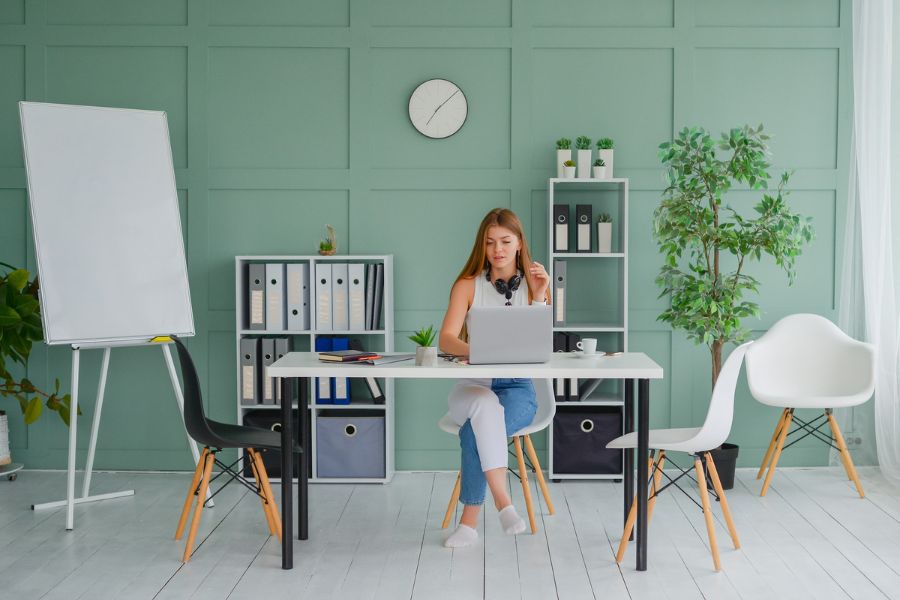
In the fast-paced world of modern business, interior design for small office spaces plays a crucial role in shaping productivity, creativity, and overall employee satisfaction. While larger companies often have the luxury of expansive office layouts, small businesses, and startups frequently contend with limited square footage. However, with thoughtful planning and strategic design choices, even the most compact office spaces can be transformed into vibrant and efficient work environments. In this article, we’ll explore a comprehensive guide to interior design for small office spaces, offering practical tips and inspirational ideas to help you optimize your workspace for success.
Strategic Space Planning for Enhanced Efficiency
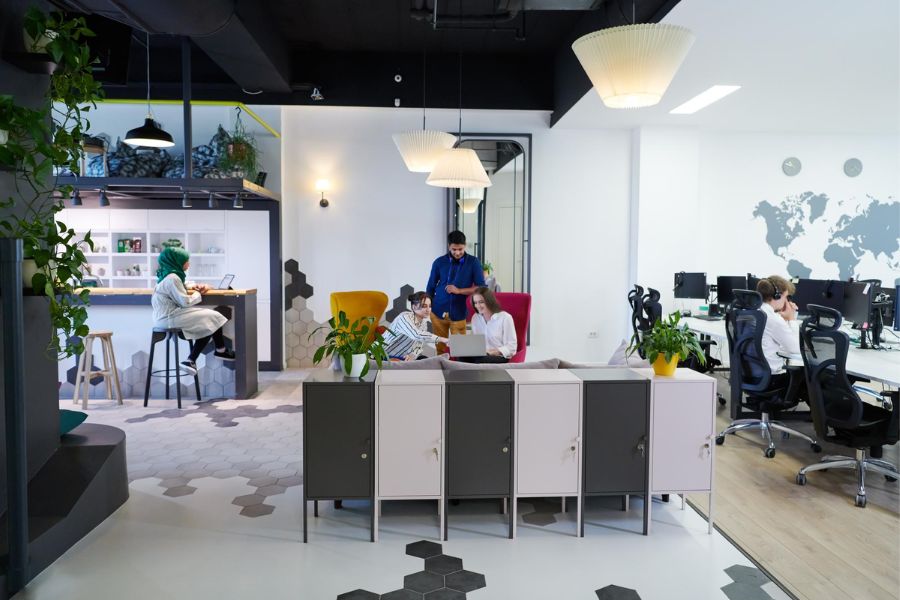
Effective space planning is essential for optimizing interior design for small office spaces. It forms the cornerstone of any interior design strategy tailored to these compact environments. Begin by meticulously assessing the available space and identifying key functional zones, such as workstations, meeting areas, and storage spaces. It’s crucial to consider the flow of traffic within the space and prioritize accessibility to essential amenities. By maximizing every inch of available space and streamlining the layout, you can create an environment conducive to productivity and efficiency.
In small office spaces, innovative solutions are paramount to maximizing the potential of limited square footage. Embrace the challenge by exploring space-saving techniques such as multifunctional furniture arrangements and modular workstation configurations. Utilize design tools like floor plans and 3D renderings to visualize various layout options and optimize space utilization. Collaborating with experienced interior designers or space planners can further enhance the effectiveness of your design strategy, ensuring it aligns perfectly with your specific needs and objectives. Through strategic space planning and creative design solutions, interior design for small office spaces can significantly enhance functionality and productivity.
Multi-functional Furniture: Versatility in Design
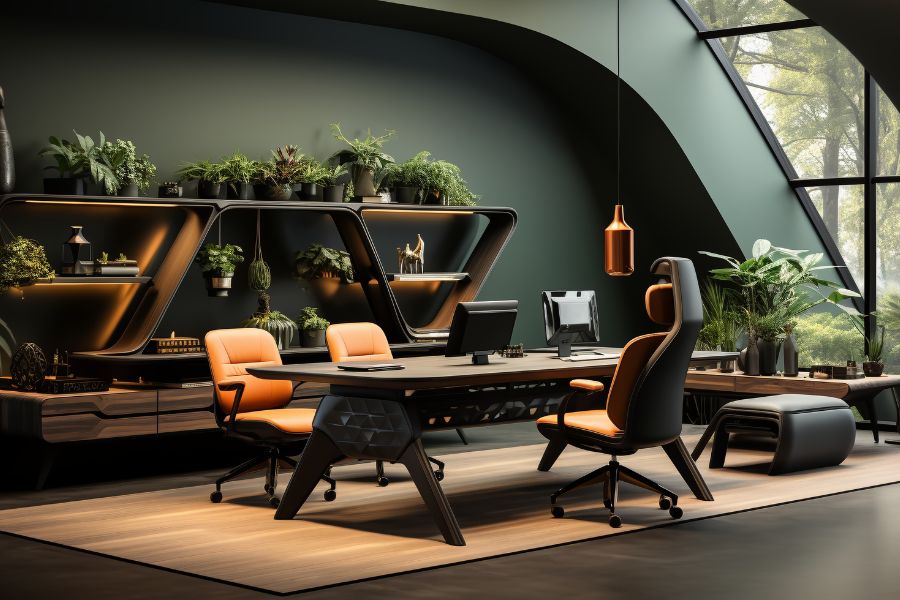
When embarking on interior design for small office spaces, the choice of furniture becomes critical. Versatility and space-saving functionality take precedence in this endeavor. It’s essential to opt for multipurpose pieces capable of serving various functions, such as convertible desks doubling as storage units or modular seating arrangements easily reconfigured to accommodate diverse activities. Sleek and streamlined designs are advantageous, minimizing visual clutter and maximizing floor space. Additionally, don’t underestimate the potential of vertical storage solutions to optimize limited square footage.
Selecting the appropriate furniture for small office spaces demands meticulous attention to both form and function. Prioritizing ergonomic design principles ensures that furniture pieces are not only aesthetically pleasing but also comfortable, supportive, and conducive to prolonged periods of work. Investing in high-quality pieces that endure the rigors of daily use is paramount.
Illuminating Ideas: Lighting Strategies for Small Spaces
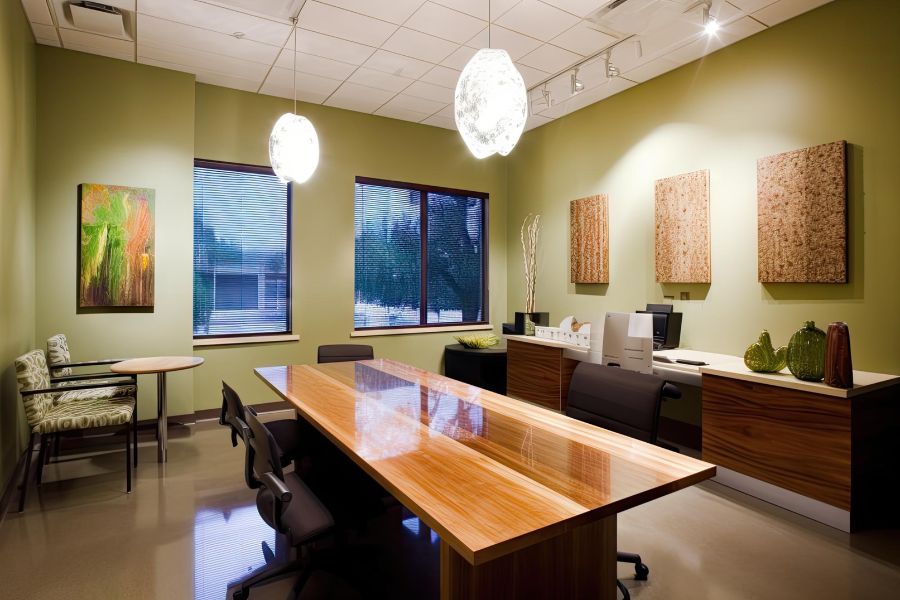
Proper lighting is essential for creating a comfortable and productive work environment, especially in interior design for small office spaces where natural light may be limited. Maximize natural light by strategically placing workstations near windows and using sheer curtains or blinds to control glare. Supplement natural light with strategically placed artificial lighting fixtures, such as overhead task lighting and adjustable desk lamps, to ensure adequate illumination throughout the space. Consider incorporating energy-efficient LED lighting options to reduce energy consumption and create a more sustainable workspace.
In interior design for small office spaces, lighting plays a critical role in setting the mood and enhancing productivity. Experiment with different lighting techniques, such as layering ambient, task, and accent lighting, to create a dynamic and visually engaging environment. Incorporate dimmer switches or smart lighting controls to adjust the intensity and color temperature of light according to the time of day and specific tasks. Pay attention to lighting placement to minimize shadows and glare, and use reflective surfaces such as mirrors and glass to bounce light around the room and create a sense of spaciousness.
Chromatic Choices: Harnessing Color Psychology
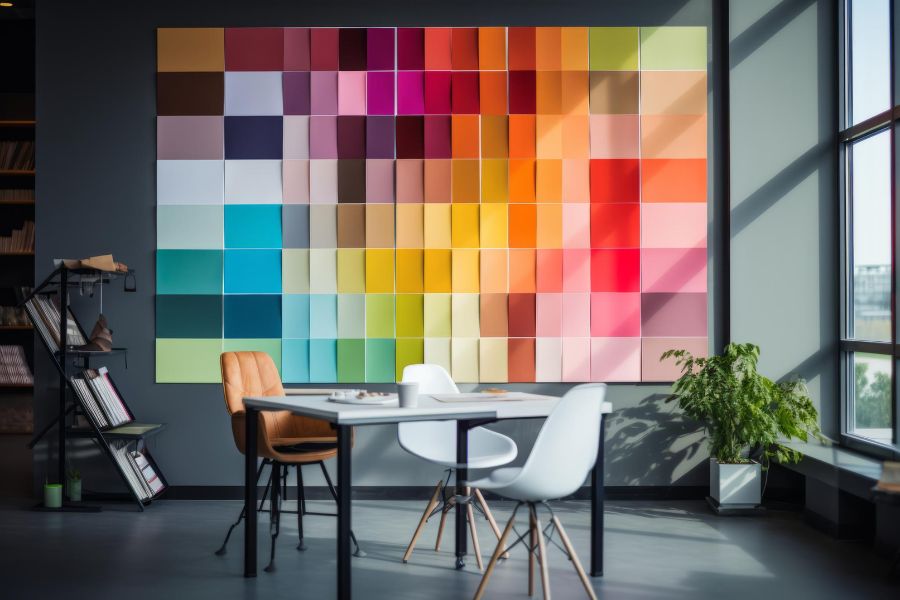
The use of color can have a significant impact on the perceived size and atmosphere of an interior design for small office spaces. Opt for light and neutral hues, such as soft grays, pale blues, and creamy whites, to create an open and airy feel. Introduce pops of color through accent walls, furnishings, and accessories to add visual interest and personality to the space. Incorporate reflective surfaces, such as mirrors and glossy finishes, to bounce light around the room and create a sense of depth. Consider integrating artwork, textiles, and other decorative elements that reflect your brand identity and inspire creativity among employees.
Choosing the right color palette and décor elements can transform a small office space into a vibrant and inviting work environment. Start by identifying the mood and atmosphere you want to create, whether it’s a calm and serene retreat or a dynamic and energetic workspace. Experiment with different color combinations and textures to find the perfect balance between aesthetics and functionality. Incorporate elements of biophilic design, such as natural materials and organic patterns, to evoke a connection to the outdoors and promote a sense of well-being. Personalize the space with meaningful decorations and artwork that reflect your company culture and values.
Storage Solutions: Maximizing Organization
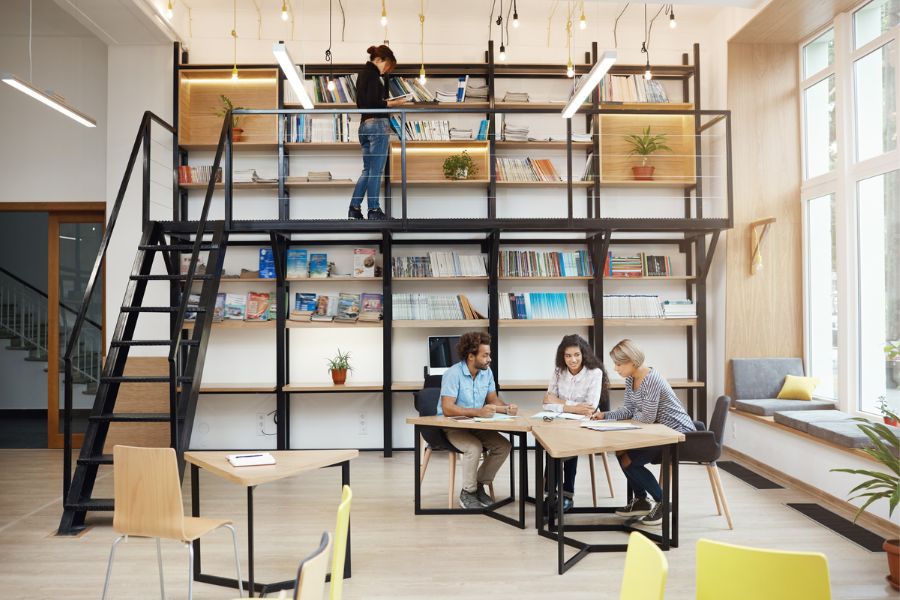
Efficient storage solutions play a vital role in upholding order and organization within interior design for small office spaces. It’s imperative to capitalize on vertical storage options, such as floating shelves, wall-mounted cabinets, and overhead storage units, to maximize valuable floor space. Additionally, investing in multifunctional furniture pieces equipped with concealed storage compartments, like filing cabinets cleverly disguised as side tables or ottomans with hidden storage, proves indispensable. Embracing digital storage solutions, such as cloud-based document management systems, further diminishes reliance on physical storage, thereby streamlining workflow processes.
In the realm of interior design for small office spaces, efficient storage solutions play a pivotal role in enhancing productivity and maintaining a clutter-free environment. It is imperative to carefully assess the storage needs of your workspace, considering factors such as the frequency of item usage and accessibility. By incorporating a blend of open and closed storage options, you can strike a harmonious balance between visibility and organization
Seamless Technology Integration: Enhancing Connectivity
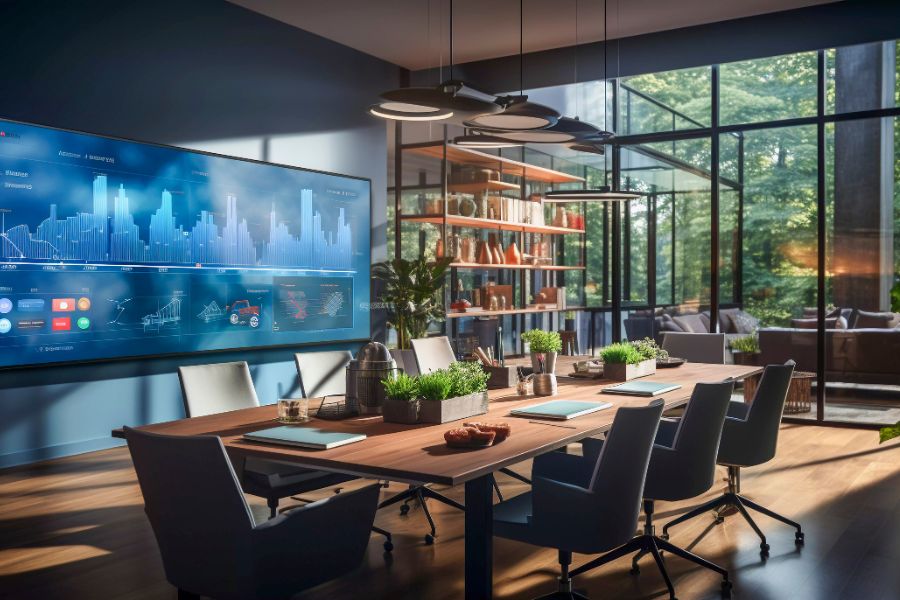
In today’s digital age, seamless integration of technology is essential for modern office environments. Conceal wires and cables with cable management systems or discreet raceways to minimize visual clutter and create a clean and professional aesthetic. Incorporate integrated technology solutions, such as wireless charging stations, smart lighting controls, and digital collaboration tools, to enhance productivity and connectivity among team members. Ensure that essential technology devices, such as computers, printers, and chargers, are easily accessible and ergonomically positioned to support efficient workflow.
Integrating technology seamlessly into the interior design for small office spaces requires careful planning and attention to detail. Begin by conducting a thorough inventory of existing technology infrastructure and identifying areas for improvement. Invest in high-quality equipment and accessories that are compatible with your existing systems and meet the specific needs of your team. Explore space-saving options such as wall-mounted monitors, compact printers, and ergonomic keyboard trays to optimize the use of limited space. Provide training and support to employees to ensure they are comfortable using new technology tools and systems. Regularly update and maintain technology equipment to ensure optimal performance and reliability.
Greenery and Biophilic Design
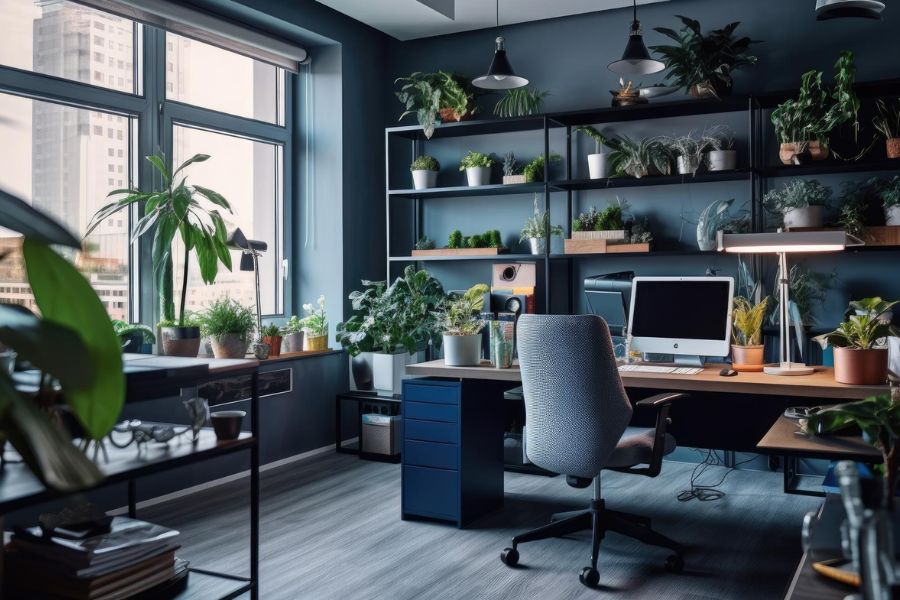
Bringing elements of nature into the workplace can have a profound impact on employee well-being and productivity. Introduce plants and greenery throughout the office to improve air quality, reduce stress, and increase concentration levels. Choose low-maintenance indoor plants, such as succulents, ferns, and peace lilies, that thrive in indoor environments with minimal natural light. Incorporate biophilic design principles, such as natural materials, textures, and patterns, to create a connection to the outdoors and foster a sense of calm and tranquility within the workspace.
Incorporating biophilic elements into a small office space can enhance the overall aesthetic and promote a sense of well-being among employees. Start by strategically placing plants and greenery in areas where they will have the greatest impact, such as near workstations, meeting areas, and common areas. Select plant varieties that are well-suited indoor environments and require minimal maintenance, such as succulents, spider plants, and pothos. Consider incorporating natural materials such as wood, stone, and bamboo into furniture, finishes, and décor elements to create a warm and inviting atmosphere. Experiment with textures and patterns inspired by nature, such as leaf motifs, botanical prints, and organic shapes, to add visual interest and dimension to the space.
Case Studies and Inspirational Examples
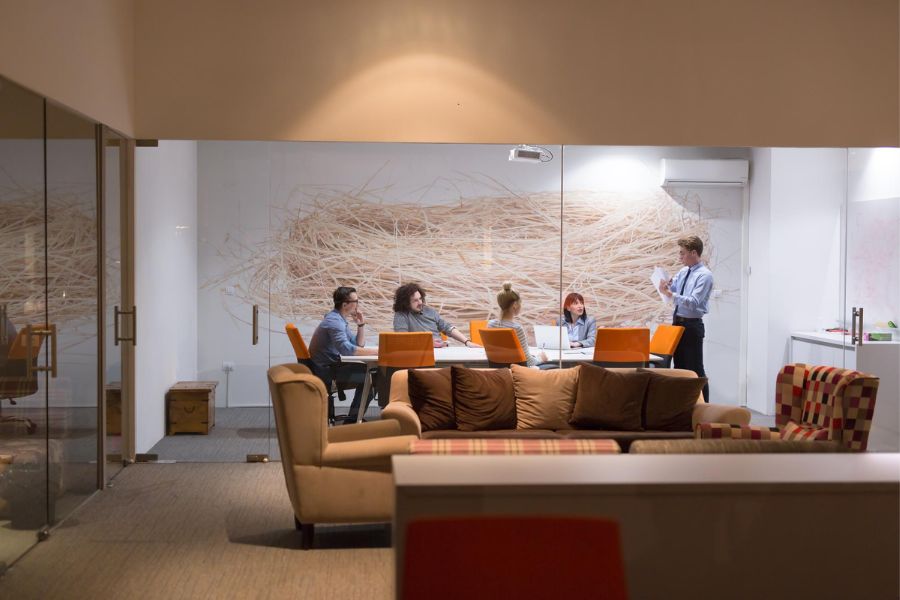
To provide real-world inspiration and practical insights, and showcase successful interior design for small office spaces. Highlight innovative design solutions and creative use of space-saving techniques, such as compact furniture arrangements, modular workstations, and inventive storage solutions. Share testimonials and feedback from employees to demonstrate the impact of thoughtful design on productivity, collaboration, and morale. Encourage readers to draw inspiration from these examples and adapt proven strategies to their own office environments.
Case studies and inspirational examples offer valuable insights into the practical application of design principles and solutions in real-world settings. Highlight successful projects that demonstrate effective space planning, ergonomic furniture selection, and creative design solutions for small office environments. Include before-and-after photos, floor plans, and testimonials from clients to illustrate the transformational impact of strategic interior design for small office spaces. Provide detailed descriptions of key design elements and techniques used in each project, along with explanations of the rationale behind design decisions. Encourage readers to analyze and critique each case study to gain a deeper understanding of the principles and strategies employed.
Conclusion
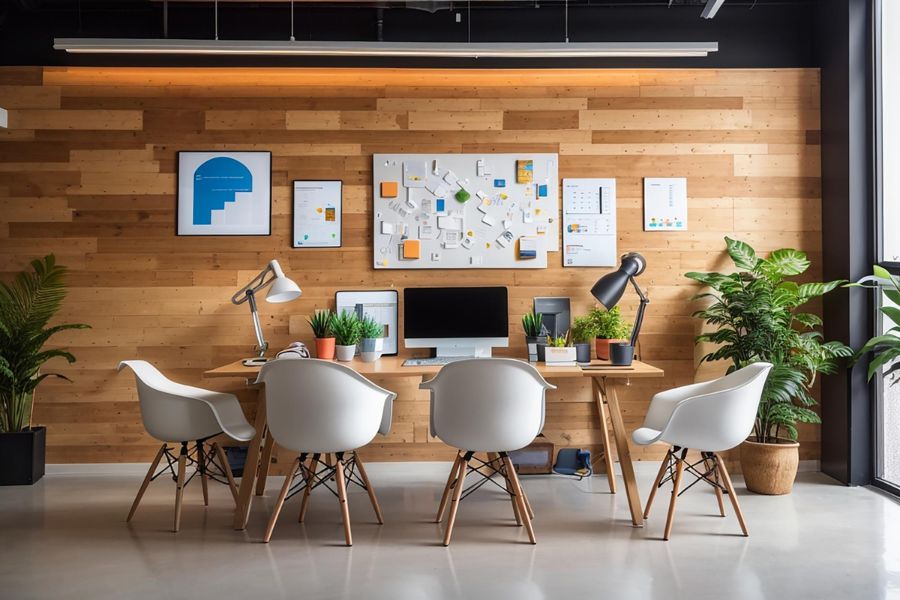
As Studio A, a leading interior design company, we understand the transformative power of effective interior design for small office spaces. Through strategic space planning, meticulous furniture selection, and innovative design solutions, we have the expertise to craft workspaces that not only maximize productivity and efficiency but also enhance employee satisfaction. Whether you’re embarking on a new venture or seeking to revitalize your current office, investing in intelligent design choices yields tangible benefits such as heightened performance, increased innovation, and enhanced employee retention. Embrace the challenge of optimizing small office spaces with Studio A and unlock the full potential of your workplace environment.
FAQs (Frequently Asked Questions)
How can I optimize limited square footage in my small office using interior design for small office spaces?
A: Focus on strategic space planning, choose versatile furniture, and utilize vertical storage solutions to maximize functionality within the confines of your workspace.
What are some interior design for small office spaces tips for seamlessly integrating technology?
A: Conceal wires and cables, invest in smart technology solutions, and ensure that essential devices are easily accessible and ergonomically positioned to streamline workflow and enhance productivity.
How can biophilic design principles be applied to improve the atmosphere of a small office space?
A: Incorporate interior design for small office spaces techniques such as introducing plants and natural materials to enhance air quality and foster a sense of well-being among employees, promoting a healthier and more inspiring work environment.
What are some innovative strategies for maximizing natural light in interior design for small office spaces?
A: Optimize natural light by strategically placing workstations near windows, utilizing sheer curtains to control glare, and integrating reflective surfaces to amplify brightness and create a more inviting and energizing atmosphere.
How can I infuse my small office space with personal touches while maintaining a professional aesthetic in interior design for small office spaces?
A: Strike a balance by selecting a light and neutral color palette as a backdrop and incorporating pops of color and personalized décor elements that reflect your brand identity, adding character and warmth to your workspace without compromising its professional appearance.
Image Reference: Freepik
Disclaimer: All trademarks, logos, and brand names are the property of their respective owners. All company, product, and service names used in this website are for identification purposes only. Use of these names, trademarks, and brands does not imply endorsement.
